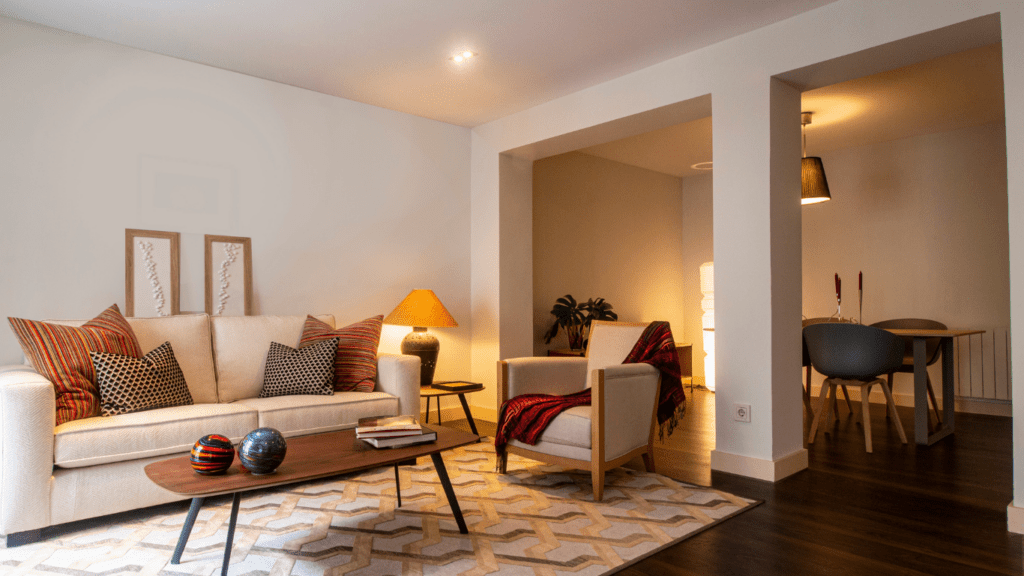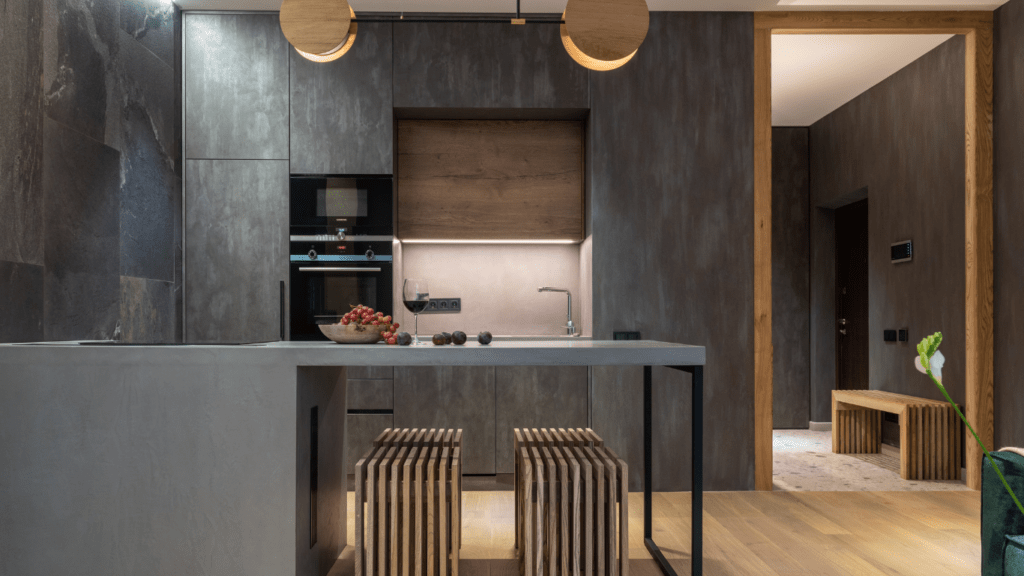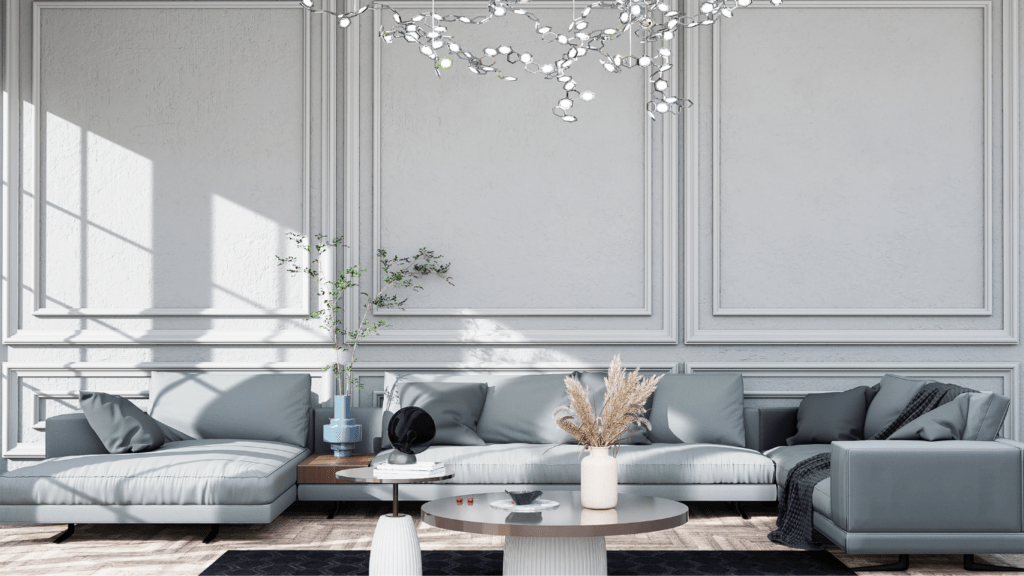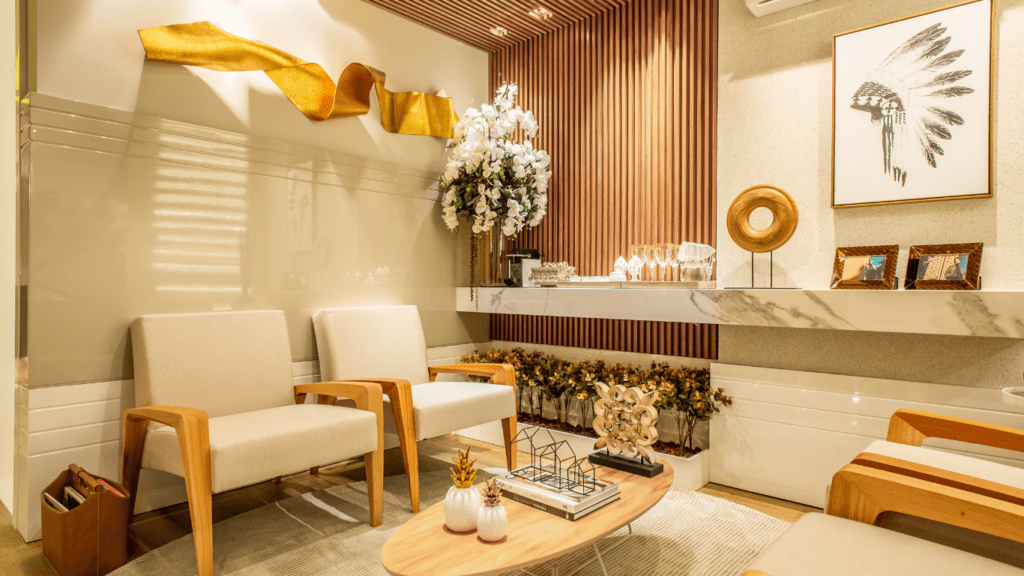Importance Of Efficient Furniture Placement
Efficient furniture placement enhances space without sacrificing style. It transforms cramped areas into inviting spaces. By arranging furniture thoughtfully, it’s possible to improve flow and functionality in any room.
- Increased Usable Space: Good placement frees up floor space, even in small areas. For instance, placing a bookcase against a wall or pushing a sofa to a corner.
- Improved Flow: Arranged furniture allows easy navigation. Open pathways reduce clutter and help movement.
- Enhanced Functionality: Proper placement ensures each piece serves its purpose. A well-placed desk in a home office maximizes productivity.
- Balanced Aesthetics: Efficient placement creates harmony. Balancing furniture size and room proportions adds visual appeal.
- Better Lighting: Arrange furniture to make the best use of natural light. Positioning mirrors to reflect light brightens the room.
- Enhanced Comfort: Proper layout ensures comfortable living. Placing sofas and chairs to facilitate conversation creates a welcoming atmosphere.
Tip 1: Measure Your Space
Accurately measuring your space ensures that you make informed decisions when arranging your furniture. Grab a tape measure and get accurate dimensions.
Using a Tape Measure
Using a tape measure is crucial for precise space dimensions. Extend the tape measure from wall to wall and note the measurements of different sections. Measure doorways, windows, and any built-in features like shelves or radiators. Documenting these dimensions helps you plan furniture placement effectively and avoid overcrowding the room.
Tip 2: Create A Floor Plan
Visualizing your space before moving furniture helps maximize efficiency. Creating a floor plan lays the foundation for an organized room.
Digital Tools For Floor Planning
Several digital tools make creating floor plans easy. Tools like RoomSketcher, Planner 5D, and Homestyler offer user-friendly interfaces. They let you input room dimensions and arrange furniture virtually. For example, RoomSketcher provides 2D and 3D views, making it simple to see potential layouts. These tools often include furniture catalogs, allowing you to select items matching your style. Using them, you can test various configurations without heavy lifting. Digital tools save time and prevent common placement mistakes by giving a visual representation of the final setup.
Tip 3: Focus On Functionality
When aiming to maximize space, focusing on functionality is crucial. Ensuring each item fulfills a purpose enhances room efficiency and usability.
Prioritizing Use Over Aesthetics
Prioritize functionality by considering each furniture piece’s use. For instance, in living rooms, choose a sofa with hidden storage, providing comfort and functionality. Avoid cramping the space with purely decorative items. In kitchens, opt for multi-functional islands or dining tables that double as prep spaces. By placing utility first, rooms become more practical and spacious.
Tip 4: Utilize Corners Effectively
Corners often go unused, but they hold incredible potential for maximizing space. By creatively utilizing corners, one can transform underused areas into functional parts of a room.
Corner Furniture Options
Choosing the right corner furniture is crucial. Consider these options:
- Corner Desks: Ideal for home offices, corner desks maximize workspace without dominating the room. They fit snugly into corners, freeing up wall and floor space.
- Corner Shelves: These shelves provide additional vertical storage. They can display decor items or store books and other essentials, making the most of vertical space.
- Corner Sofas: Perfect for living rooms, corner sofas create a cozy seating area. They provide ample seating while using less space than traditional sofas.
- Corner Cabinets: Great for both kitchens and living rooms, corner cabinets offer hidden storage, keeping the room tidy and organized.
By incorporating these types of corner furniture, rooms can feel larger and more organized.
Tip 5: Opt For Multi-Functional Furniture
Focusing on multi-functional furniture can significantly maximize space in any room. These versatile pieces offer several features that serve multiple purposes, enhancing both functionality and aesthetics.
- Storage Ottomans: These versatile pieces provide seating while offering hidden storage for blankets, toys, or other items. They’re perfect for living rooms or bedrooms.
- Sofa Beds: Ideal for small apartments or guest rooms, sofa beds function as comfortable seating by day and convert into sleeping areas at night.
- Foldable Desks: Perfect for home offices, foldable desks can be tucked away when not in use, freeing up valuable floor space for other activities.
- Lift-Top Coffee Tables: These tables have adjustable tops that lift to create a convenient working or dining surface. They often come with storage compartments underneath.
- Convertible Dining Tables: These tables can expand or collapse based on the number of guests, making them adaptable for various space requirements.
- Wall-Mounted Shelves: Multifunctional shelves save floor space and can serve as book storage, display areas, or even small workstations.
- Murphy Beds: These beds fold up into the wall during the day, providing extra living space and transforming a bedroom into a multipurpose room.
- Modular Sofas: These sofas can be rearranged or separated into individual pieces, adapting to different room layouts and seating needs.
- Pull-Out Cabinets: Perfect for kitchens, pull-out cabinets offer hidden storage and workspace options, making the kitchen more organized and functional.
- Nestled Tables: These tables can be stacked together when not in use and separated for additional surface area during gatherings or activities.
Tip 6: Follow The Rule Of Thirds
Applying the rule of thirds can greatly enhance the appearance and functionality of any room. This principle, used by designers and artists, involves imagining a grid that divides space into nine equal parts.
How To Apply The Rule
Position significant furniture pieces along the imaginary lines or at intersections in the grid. For example, place a sofa or bed along one of the horizontal lines to create balance. In the living room, align the focal point, like a TV or fireplace, at one of the grid’s intersections. This positioning draws the eye naturally and helps distribute visual weight evenly, making the room more cohesive.
Ensure that secondary pieces, such as end tables or lamps, are arranged to complement the primary items placed on the grid. This mindful alignment not only maximizes space but also improves the room’s aesthetic appeal.
Tip 7: Keep Pathways Clear

Ensuring clear pathways in a room improves flow, safety, and overall aesthetics. Open walkways allow for easy movement and make any room feel more spacious.
Ideal Pathway Widths
Pathway widths play a crucial role in maintaining open spaces. Ideally, walkways between furniture items should be at least 36 inches wide, ensuring comfort. For high-traffic areas, such as hallways and entrance paths, a width of 42-48 inches is optimal. These dimensions prevent congestion and create a more open environment. For example, place a console table or bench in an entryway, ensuring there’s ample space to walk through. By following these guidelines, movement within a room becomes effortless and intuitive.
Tip 8: Use Vertical Space
In compact spaces, thinking vertically can make a significant difference. By using taller furniture and shelving units, you can free up valuable floor space while keeping the room functional.
Shelving And Tall Furniture Ideas
Opting for tall furniture like bookcases, wardrobes, and armoires is crucial. These pieces serve as effective storage solutions, freeing up floor space. For example, use a tall bookcase to store books, decor, and other items without requiring additional floor space. Similarly, a tall wardrobe can store more clothes and accessories than a shorter one.
Shelving is another excellent way to utilize vertical space. Floating shelves can hold books, plants, or photo frames without encroaching on floor area. Installing a series of shelves vertically creates a visual line that draws the eye upward, making the ceiling feel higher and the room more spacious.
Wall-mounted units are ideal for small rooms. A wall-mounted desk can be folded up when not in use. These versatile items are perfect for bedrooms or living areas where every inch counts.
Don’t overlook tall storage bins and baskets that can be stacked. These allow vertical storage with easy access to everyday items. By incorporating these solutions, you maximize vertical space, creating a more organized and spacious room.
Tip 9: Symmetry And Balance
Achieving symmetry and balance in furniture placement can make a room feel organized and spacious. These principles create visual harmony, helping the eye move comfortably across the space.
Visual Harmony Techniques
Arranging furniture and decor symmetrically alongside a central axis or focal point, such as a fireplace or a large window, adds balance. Matching pairs of items—like lamps, end tables, or chairs—on either side of this axis can enhance symmetry. Maintained symmetry in smaller rooms helps them appear less cluttered. Using mirrored or identical elements, such as twin bookshelves or paired art pieces, reinforces visual harmony. The room should feel cohesive, with each piece complementing the others without overwhelming the overall aesthetic.
To balance larger pieces with smaller decor, distribute the sizes equally across the room. This avoids one side feeling heavier than the other. If a room has a bulky sofa, place a substantial piece like a bookshelf, across from it for balance. To further harmonize, use color schemes through pillows, rugs, and decorative items to create a balanced look.
Tip 10: Keep Scale In Mind
Consider scale carefully when placing furniture in a room.
Matching Furniture To Room Size
Choose furniture that fits the room’s dimensions. Large pieces in small rooms can overwhelm the space, while small items in large rooms often feel dwarfed. For instance, in a small living room, a loveseat or apartment-sized sofa fits better than a full-sized sectional. Similarly, a grand dining table looks out of place in a compact dining area. Matching the furniture to the room’s size maintains balance and ensures the area feels comfortable and functional. Use versatile pieces like extendable tables to adapt to different needs without compromising space.



 Betsylie Sheetsin – Home Renovation Expert
Betsylie Sheetsin serves as the Home Renovation Expert at Castle Shelf House, specializing in giving practical advice for both small and large-scale home improvements. With years of experience in construction and renovation, Betsylie understands the importance of blending durability with design. Her insights into home renovation projects, along with expert advice on the latest materials and techniques, empower homeowners to tackle even the most ambitious projects confidently.
Betsylie Sheetsin – Home Renovation Expert
Betsylie Sheetsin serves as the Home Renovation Expert at Castle Shelf House, specializing in giving practical advice for both small and large-scale home improvements. With years of experience in construction and renovation, Betsylie understands the importance of blending durability with design. Her insights into home renovation projects, along with expert advice on the latest materials and techniques, empower homeowners to tackle even the most ambitious projects confidently.
